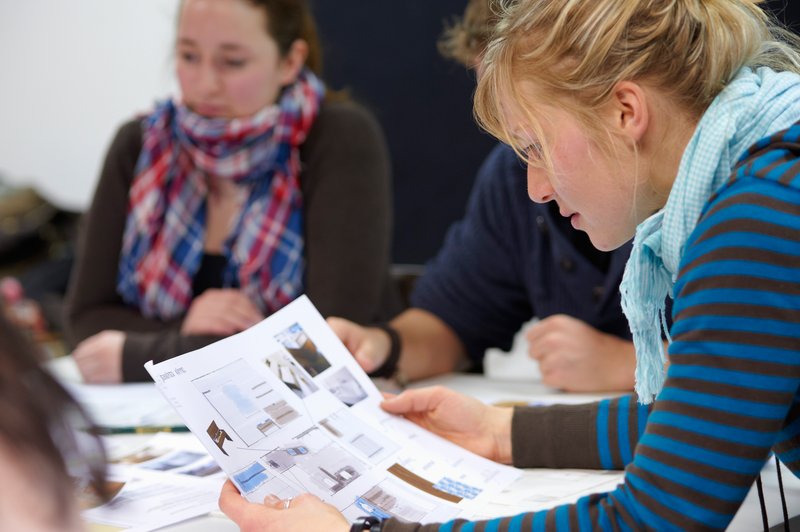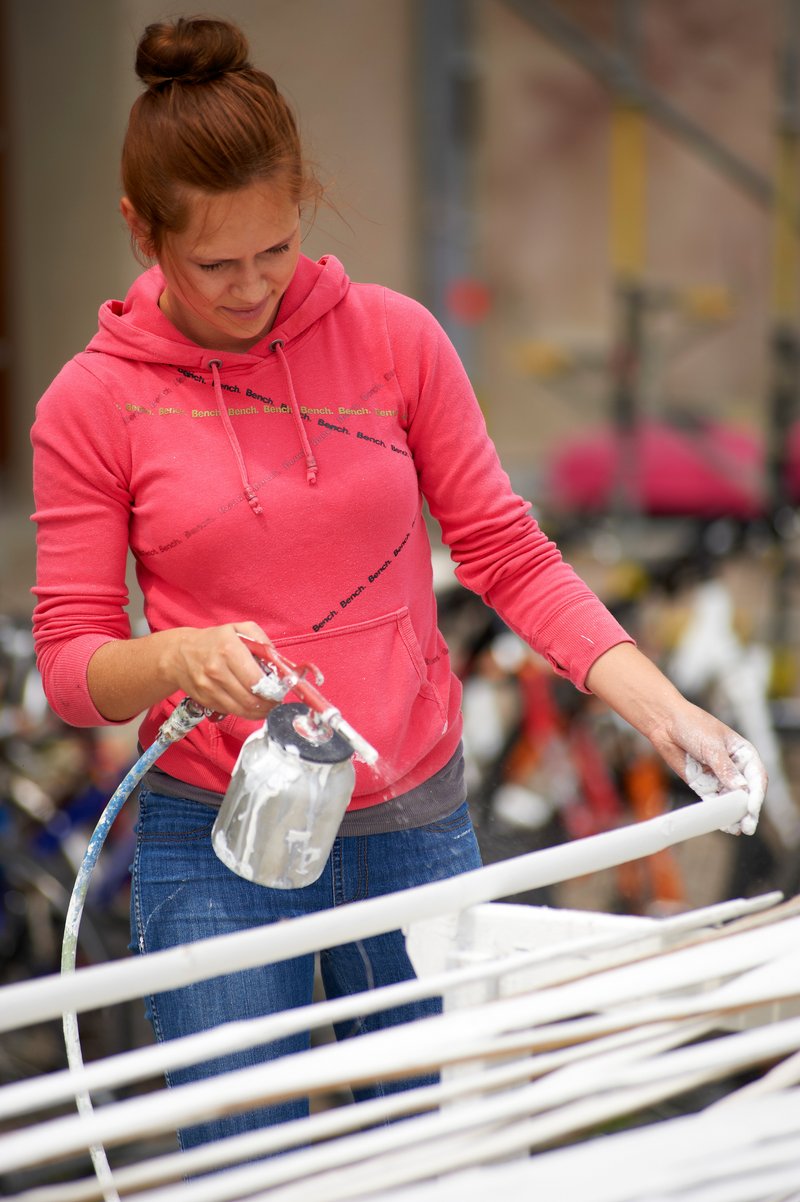
Interior Design and Interior Architecture
In A Nutshell
Profile

The requirements for interior architects change continually. The boundaries between three-dimensional space design in architecture; corporate architecture and the New Work movement; and classic design are blurring. Future interior designers should be adept in concept and product development, two- and three-dimensional design, and the design of virtual and analog spaces; they should also have craftsmanship and design skills and be able to work with both analog and digital tools. We provide students with the opportunity to pursue interdisciplinary studies but also to specialize.
Skills can only be acquired by doing, thinking, and reflecting, participating in team work, and trying things out. We believe in project work as well as cooperative and open teaching formats. The focus lies on addressing specific problems – frequently in cooperation with businesses or cultural institutions. Specifically, we study topics such as:
- Social change and transformative processes
- Innovation in three-dimensional design
- Communication, brands, and identities
- Digital and interactive living and working worlds
- Humanistic concerns
- Scientific work and research
Projects
We consider projects to be very important. Our students work and learn in and with projects from the start. They can thus test the basic design and technical knowledge they learn in theory in practical applications. These applications cover everything concerning space, object, and installation. The diverse tasks offer you the freedom to set your focus and delve into your interests, but also an opportunity to expand your own horizons.
Practical Training
Required internship semester
The required internship semester usually takes place in the fourth semester of the program. It is directed systematically and spans a contiguous period of 19 weeks. The required internship can also be spent abroad. The university has good contacts with the industry and will help students find a suitable internship position.
Structure of the Program

The interior design and interior architecture program teaches students the following skills:
- Theoretical foundations
- Perception
- A feeling for design (treatment of lines, shapes, units, rhythm, proportions, light, colors)
- Rendering (setting ideas and design proposals on paper in a target group-oriented manner)
- Conceptional work (developing your own approach)
- Practice-oriented work (experimenting and developing a culture of mistakes)
- Craftsmanship and technical skills (stamina, diligence)
- Presentation (presenting ones own ideas, developments, and designs)
- Ability to deal with criticism, team leadership
The first semester conveys the central foundations. Then the structure opens and the teaching of foundations transitions to subject-specific contents. Elective and interdisciplinary modules are offered to supplement the student's own focus area. The fourth semester is a 19-week subject-related internship with a 1-week joint final practical seminar. The main part of project-related teaching starts in the fifth semester, which combines practical segments with theoretical-conceptional working methods. In the seventh semester, students usually write their Bachelor's thesis and take the examination.
Curriculum and Examination Regulations
The [module overview]* provides an overview of the structure of the program. The [module manual] describes the contents of the individual subjects. The [study and examination regulations]* form the legal basis for the study program. Contact your academic advisors Prof. Katharina Bonhag-De Rosa and Prof. Dr. Michael Heinrich concerning the content of the program.
*only available in german at the moment
Einmal im Jahr organisieren die Studierenden auf dem Campus Design die Werkschau "Campus.Design Open". Sie zeigen ihre Werke aus den vergangenen Semestern. Außerdem gibt es öffentliche Lehrveranstaltungen, Workshops, Vorträge, Führungen durch die Gebäude, Musik und noch so manches mehr ...
External content
Job Perspectives
Classic work areas for interior designers are the design of public and private spaces. This includes hotels and restaurants, wellness areas, stores, and shopping centers. The concepts of interior designers are in high demand by museums and exhibits, but also in the design of work places. You can find interior designers working in theaters and on movie sets.
Entry into the registry of the architectural association
The federal states have deviating rules for the entry of interior designers and interior architects into the registry of the architectural associations, both in terms of the required program duration and subsequent practical professional experience.
After completing a program duration of seven semesters and at least two years of professional experience (four years in Thuringia), graduates of the Bachelor’s program in interior design and interior architecture at Coburg University have the possibility of being entered into the list of the architectural association of Bavaria and the architectural associations of four additional states (Bremen, Hamburg, Lower Saxony, Schleswig-Holstein). Only then may you use the protected professional title of "interior designer and interior architect".
For more information about the services of the association, the support network, the entry procedure, and access to the required applications and form, we recommend getting in touch directly with the architectural associations of the respective federal states.
For Bavaria, contact the Bavarian Architectural Association (Bayerische Architektentkammer): www.byak.de
Master's degree
After completing the Bachelor’s degree, good graduates have the possibility of obtaining further qualifications with a Master's degree. For this purpose, Coburg University offers the Master's program "Design M.A." and – in cooperation with Bamberg University – the Master’s program "Heritage Sciences M.A.". You then have the possibility of starting a career in academia and research.
Application and Admission Requirements
Here you can find all the important information about evaluating your school-leaving certificates and learning German in order to start a bachelor program at the University of Coburg.
Since the program is taught in German, you also have to prove your knowledge in German before the start of studies (level C1/C2).
Aptitude test
The aptitude test takes place in July. After the application deadline, all applicants will receive a written invitation to the take the aptitude test with a detailed schedule.
The 2-day aptitude test is a procedure to determine the abilities of the applicants in the areas of design, construction, color and light, perception, and social skills. It is split into the following main areas:
- Take-home test (problems are provided at the time of invitation and this test is handed in at the time of the examination)
- Practical / theoretical examination
- Personal interview to which every applicant is invited during the examination
In addition to drawing skills, the examination also tests constructive creativity, imagination, space perception, and color perception. A psychological questionnaire completes the examination.
